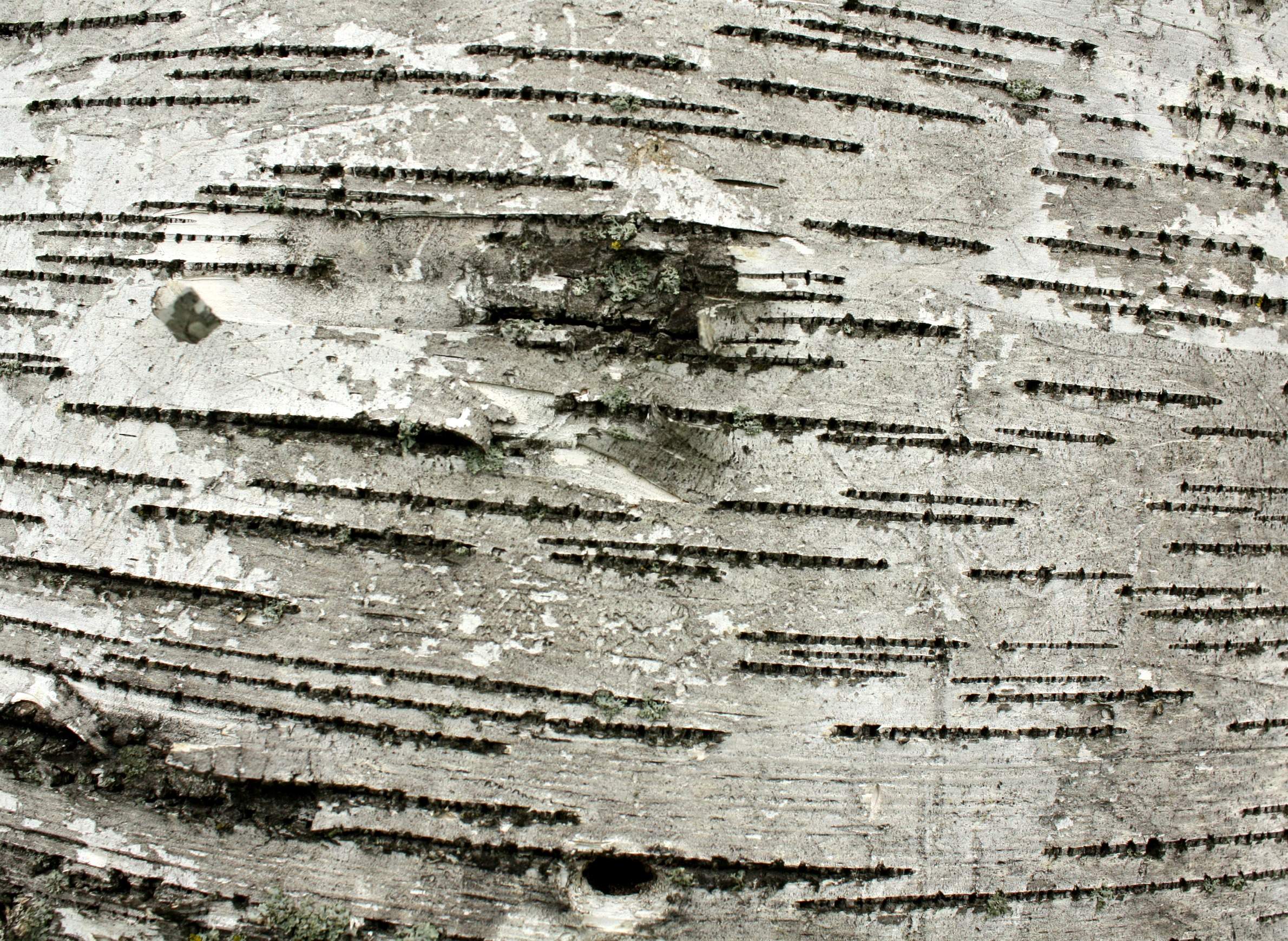
Birch Thefts Highlight Importance Of Managing Wisconsin's Forests

In the autumn of 2016, forestry and law enforcement officials in northwestern Wisconsin started receiving reports of paper birch trees being stolen from public and private lands. The tree's white, papery bark is popular for "Northwoods"-style decorations and crafts, driving demand for raw material.
Theft of smaller paper birch trees, saplings and limbs are common, with buyers paying $1.50 to $2 per pole. Wardens from the Wisconsin Department of Natural Resources estimate that a prolific poacher can make hundreds of dollars per day with no investment other than a pickup truck and hand saw. Private, tribal, county, state and national forests in northern Wisconsin, Minnesota and Upper Michigan are all facing this birch theft.
In response, representatives from tribal, county and state government departments, along with the Great Lakes Indian Fish & Wildlife Commission, law enforcement agencies, and timber wholesalers and buyers established a committee to to address this birch theft. Additionally recent media attention is prompting calls to law enforcement as people recognize and report this illegal activity — some offenders are being prosecuted for timber theft.
A tribal treaty right to gather material on public lands in ceded territory complicates the issue of paper birch theft. Illegal harvesting is generally conducted by non-tribal members, but treaty rights present a complex enforcement issue.
Tribal members can harvest up to 75 lodgepoles per day on some public forest lands with the appropriate permit, but the potential impact of overharvest on the regeneration and growth of birch is a concern. On tribal lands, members are expressing concerns for the resource after seeing truckloads of birch leaving reservations. The Bad River and Lac Courte Oreilles reservations have birch harvesting moratoriums in place to reduce commercial harvests, impacting the treaty rights of those gathering these trees for personal or cultural use.
In the larger picture of Wisconsin’s forest products industry, the volume of birch theft is very small. However, illegal cutting steals future revenue from forestland owners, and destroys trees that will never be legally cut and sold. Additionally, these thefts reduce the future birch supply available for harvest and sale into the traditional forest products industry for uses like pulpwood for paper production.
A declining resource
Wisconsin's 16.5 million acres of timberland supports a total growing stock of 21.9 billion cubic feet for all tree species. The growing stock of paper birch (Betula papyrifera) makes up a small portion of this volume, consisting of 481 million cubic feet, or about 2 percent of total growing stock. While paper birch's annual removal in the form of legal harvest is 13.1 million cubic feet, the species has a negative net annual growth rate of -4.3 percent in Wisconsin. This means the state is losing this forest type as other tree species take their place through natural succession.
This negative growth rate is happening for several reasons. Paper birch is an early successional species; it needs full sun exposure and disturbance to thrive. Larger clear cuts in past years provided each, but this harvest method has declined over time, with a consequence of decreasing birch regeneration. Other reasons for the tree's declining numbers include high mortality caused in drought years, and from insect and disease pressure.
It is important for consumers to ask questions when making home décor purchases. Where did the birch come from? Was it legally harvested? In traditional wood markets, timber theft has been an issue for export lumber for many years. Consumers in the United States and Europe had concerns about illegally harvested timber and ceased purchasing lumber from certain African countries where illegal logging is rampant.
Both the U.S. and the European Union have laws that prevent the import of illegally harvested timber products. In the U.S., the ongoing Seneca Creek Study has shown due diligence can demonstrate the legality of harvested timber, a requirement for exporters hoping to sell American lumber into the E.U. In the rare cases that theft does happen, legal systems are in place to deal with the issue.
Birch theft is the unfortunate result of consumer demand, unscrupulous harvesters and unscrupulous buyers. Local awareness and media attention will help restrict this activity, and efforts by the working committee in northern Wisconsin may provide other solutions. Paper birch is an important forest component that should be managed for future generations.
Scott Bowe is a wood products specialist at the University of Wisconsin-Extension, and a professor in the UW-Madison Department of Forest and Wildlife Ecology.


